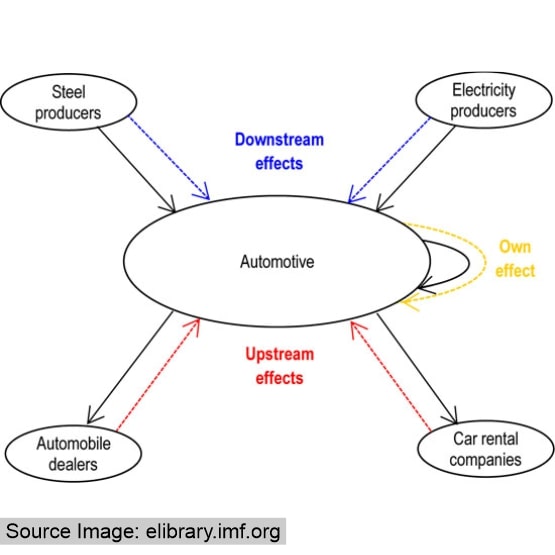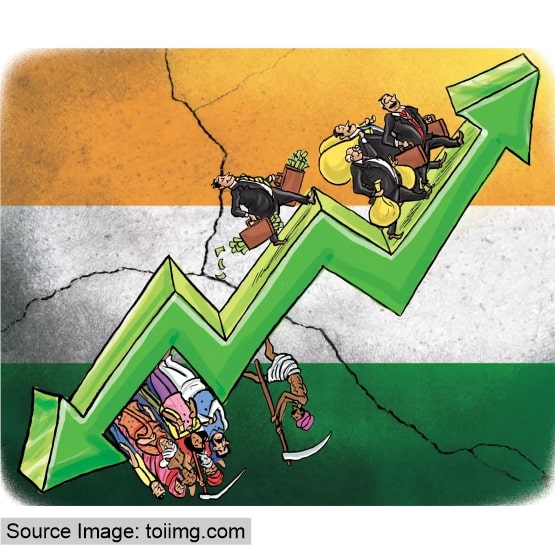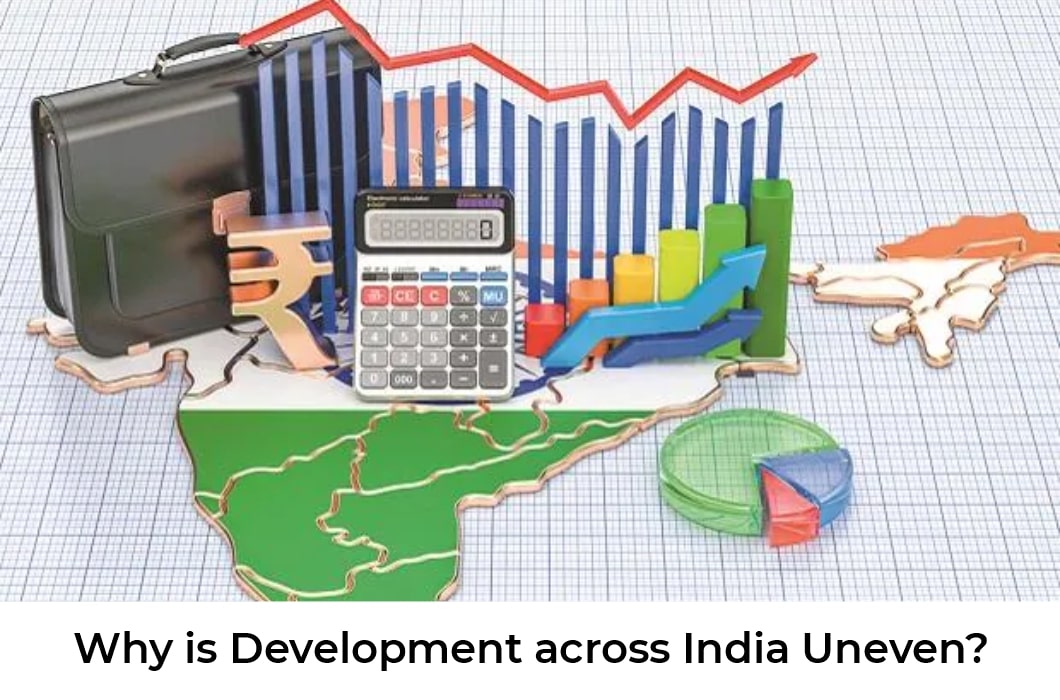Until 1947 India was a British colony. But now, it has its own democratically elected government with a rapidly growing economy in Southern Asia. It has the second-largest population in the world with 1.3 billion people. This is leading to social and cultural changes. India has a diverse cultural background. One of India’s most famous cultural exports is Bollywood films which are exported around the world. Ports, such as those in Mumbai, have developed along India’s extensive coastline, providing significant trade opportunities for India. India has a varied landscape from mountains to great plains and deserts to lush forests. These natural environments and rich culture and traditions make India a popular tourist destination. But even by developing country standards, India’s regional development has been particularly uneven. Since the 1960s, India’s regional growth performance has been categorized into the high-income group and the low-income group. The rich group constitutes states such as Gujarat, Maharashtra, Punjab, and Haryana, with the more recent additions of Tamil Nadu and Karnataka and the poor group includes Orissa, Bihar, Rajasthan, Madhya Pradesh, and Uttar Pradesh, amongst others. Worryingly, the composition of these groups has remained largely unchanged over the last four decades. There is also another ‘mobile’ group of middle-income states that have gone in and out of fortune. For example, West Bengal was a rich state in the 1960s but went into decline in the 1970s and 1980s. On the other hand, Tamil Nadu has seen persistent improvement in living standards and today comes under rich states.
How and Why is Development across India Uneven?
Attempts to understand this uneven growth performance have occupied a large
socio-economic literature, with explanations varying from the nature of the state to
planning and development, the tax system, investment, education, and infrastructure, to name a few. This uneven development can be explained by the core-periphery model. Core areas include industrialized, urban areas which are centers for
economic growth. The periphery is the surrounding, mainly rural areas where there is little economic development and few jobs. Core areas develop around raw materials. Once a large industry moves into an area, there is a multiplier effect. This means people have better jobs and a higher income which leads to increased wealth in the area. This means there is more investment in the infrastructure, which in turn attracts more businesses to the area. In addition to this, there is also a growth in smaller industries either providing goods and services to the main industry or, using the products of the main industry in manufacturing.
In India, the southern and western states have the highest
GDP per capita. Maharashtra is the most urbanized state in India. Greater wealth means more money can be spent on healthcare and education, improving people’s quality of life. States that are peripheral to Maharashtra, such as Bihar, have higher levels of poverty. They still rely on agriculture for much of their income. However, crop yields and prices are variable. Due to low incomes, economic investment in peripheral areas is relatively low, making it challenging for development.
High-Income and Low-Income Groups
The international experience has revealed a particular spatial pattern: countries in the European Union and regions within countries have shown patterns of development where economic growth “spills over” into neighboring regions. Producing regions connect to their sources of raw materials and markets through roads and railways. Subsidiary industries connected to the main industry are also set up in the same region for ease of transportation, and thus a whole set of industries emerge in one hub.
India, unusually, does not show any evidence of a ‘neighbors’ effect’. In other words, a spillover effect does not explain why certain sets of Indian states cluster to form either rich or poor groups. However, individually assessing each state in each club explains this anomaly.
States in the high-income group:
- Gujarat and Maharashtra state on India’s west coast are industrially driven and most of their products are exported.
- Punjab and Haryana are India’s ‘bread basket’ producing more than 50 percent of India’s rice and wheat.
Agriculturally driven, Punjab and Haryana are connecting Gujarat and Maharashtra but do not bear any economic linkages through which ‘
spillover’ might occur.
Gujarat and Maharashtra are also industrially different:
- Gujarat produces textiles and machine parts
- Maharashtra focuses on automobiles, aerospace, and farm equipment.
On the basis of these four states, one can easily explain why there has been no ‘neighbors’ effect’ for the rich states’ group. Their industries do not mutually benefit each other and are not dependent on each other. Even Karnataka in the southwest and Tamil Nadu, on the southeast coast, come under the high-income group. Tamil Nadu is not neighboring the other rich states but is based on manufacturing, particularly shipbuilding. Karnataka has also developed an independent growth engine of consulting in finance and information technology for the international market. But both the states demonstrate little connectivity with other regional industries.
States in the low-income group:
Uttar Pradesh, Rajasthan, Madhya Pradesh, Bihar, Orissa, and sub-Himalayan states in the far-east have some agricultural activity, but their contribution to the national GDP is minimal. With no engine of growth, there is no economic mechanism by which these states can connect and benefit from a spillover effect.
Conclusion
India’s growth hubs are not connected with each other either geographically or via a particular engine of growth. With only a handful of growth hubs with no spillover effects, the distribution of employment across the states is leaving pockets of poverty in the poorer states. This situation has a worrying indication for
India’s economic growth and regional development. While India has experienced high GDP growth rates for the past 15 years, growth seems to have been fuelled by a few sectors of the Indian economy, and even worse, only a few states. India’s uneven economic growth, therefore, threatens to aggravate regional poverty. Subsidiary economic activities like industry, finance, services emerging from the growth hubs must be developed to provide employment and welfare across the country. With larger budgets, state governments have the resources to provide quality employment and growth opportunities to their citizens. Every citizen must ask their state government to utilize their growing resources to urbanize and build infrastructure, industrial clusters, skills development programs, and higher education capacity with a development-focused agenda. Being able to live and prosper in one’s own home state must be the objective.



